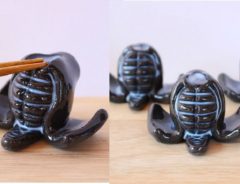- Tags:
- Illustration / Japan / Nagoya / Prints / WWII
Related Article
-

100 awesome Pokémon manhole covers officially installed in Japan, Pikachu announces
-

Japanese engineer shows “where stars are born and die” in galactic beauty
-

Japanese artist’s simple obon holiday illustration has cat lovers around the world in tears
-

Kendo armor chopstick rests let you dine like a swordsman
-

Bashful baby turtle in Japan is very self-conscious of his belly
-

Watch a Bunraku Performance of the 47 Ronin on Youtube!



Apart from the atrocities that occured on the 6th and the 9th of August in 1945, it isn’t often that we hear about the time during and after World War II from Japan’s perspective.
Numerous blockbuster movie portrayals and war novels often show only one side of a “point-the-finger” story, and have led to mainstream stereotyping of Japan and its people during the war. There are a few that attempt to close this gap through partial recognition of Japan’s own struggles throughout and after WWII (i.e, The Railway Man and Letters from Iwo Jima as well as a few notable others), however, they still leave out a large portion of the picture.
Understandably, it is much better to take in those depictions with a pinch of salt. If you want to really understand Japan’s experiences during the war, there is no better representation than the art and stories that were created by those who lived during the era.
At the Anjo City Museum of History, special exhibition ‘Illustrated War - from the eyes of a Policeman’, will display drawings created by Atsushi Sakurai during and after the war. The exhibition is a good opportunity to discover a personal viewpoint, as well as a more realistic and human perspective of Japan’s WWII than what is on offer in the entertainment industry.
Atsushi Sakurai was born in Aichi prefecture’s Anjo City and became a police officer during, and until shortly after, the war. Sakurai was assigned to the police department guard, where his role was to maintain security during the war. Sakurai’s team was also responsible for guiding evacuees and rescuing the injured during the Atsuta and Okazaki air raids.
Sakurai recorded his experiences during and after the war through a collection of coloured pencil drawings. In total, Sakurai created around 1,700 drawings depicting his experiences of the war, the lifestyle of people during the war, maintenance and rescue missions that were undertaken, the landing of the American Expeditionary Force (AEF) and the British Commonwealth Occupation Force (BCOF), as well as the postwar turmoil and the rapid growth of Japan’s black market that followed.
Temple bells were offered up for repurposing into weapons and ammunition during WWII.
Communal bath for school children heated by waste products.
The fall of Nagoya Castle.
Sakurai retired from the police force in 1948 after the death of his older brother. He then became the chief priest of Jogenji temple in 1957, and often gave recollections of wartime Japan to history classes. Following his death in 2016 at the age of 89, his family donated all of Sakurai’s war drawings to the Anjo City Museum of History.
The evergreen was scorched during the war, but miraculously it survived and started growing back in the following year.
Expeditionary Forces and Culture Shock; The Ministry of Home Affairs instructs each prefecture to set up comfort facilities for the occupation forces.
The special exhibition is free to attend and will be shown at the Anjo City Museum of History from Saturday 5 December 2020 to Monday 11 January 2021. Head over the event webpage for further details.